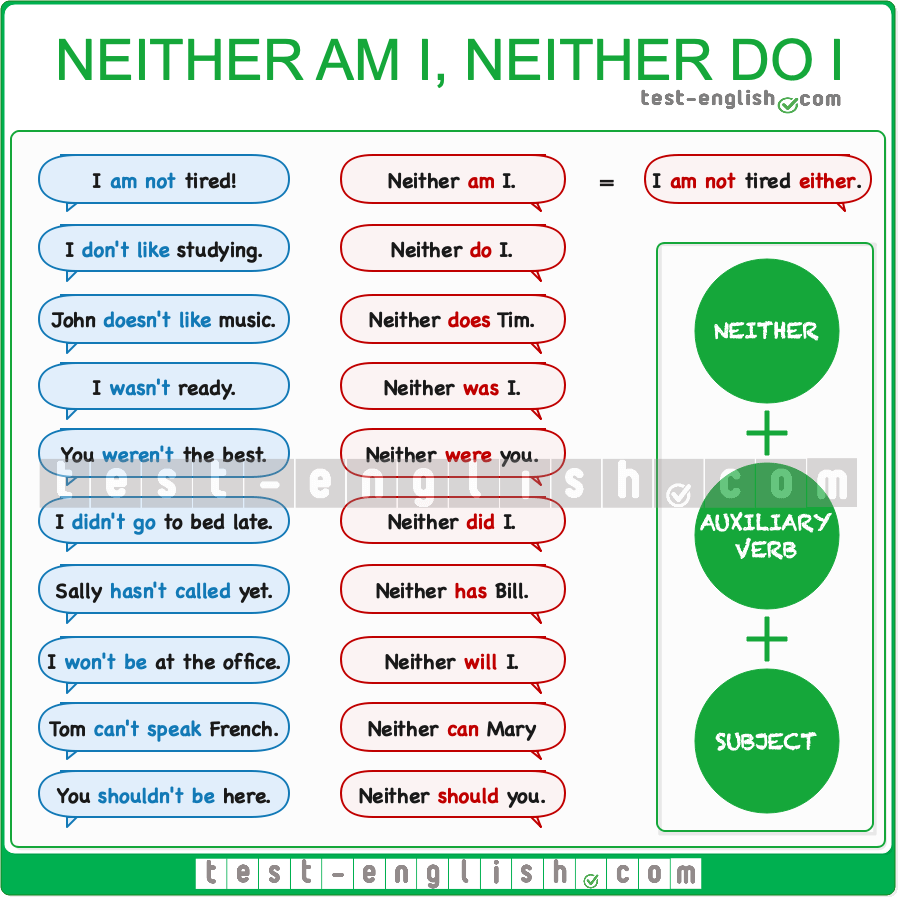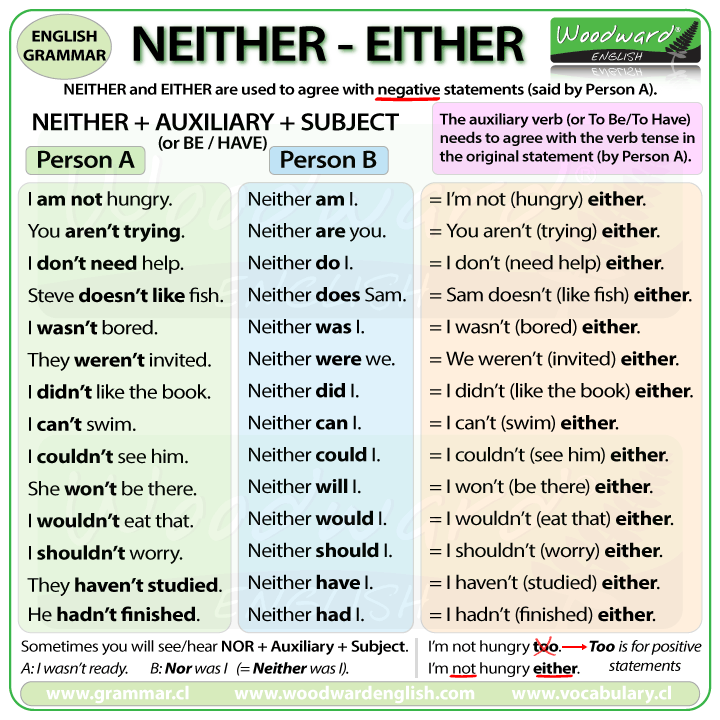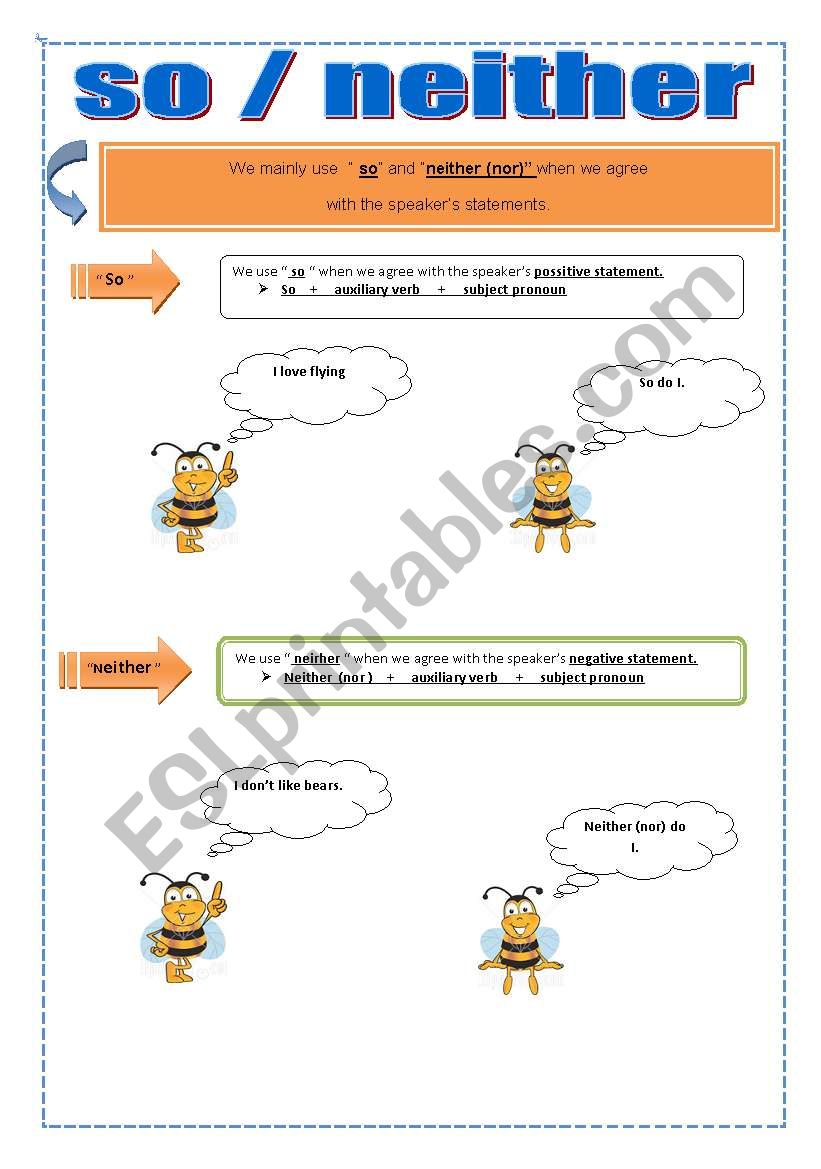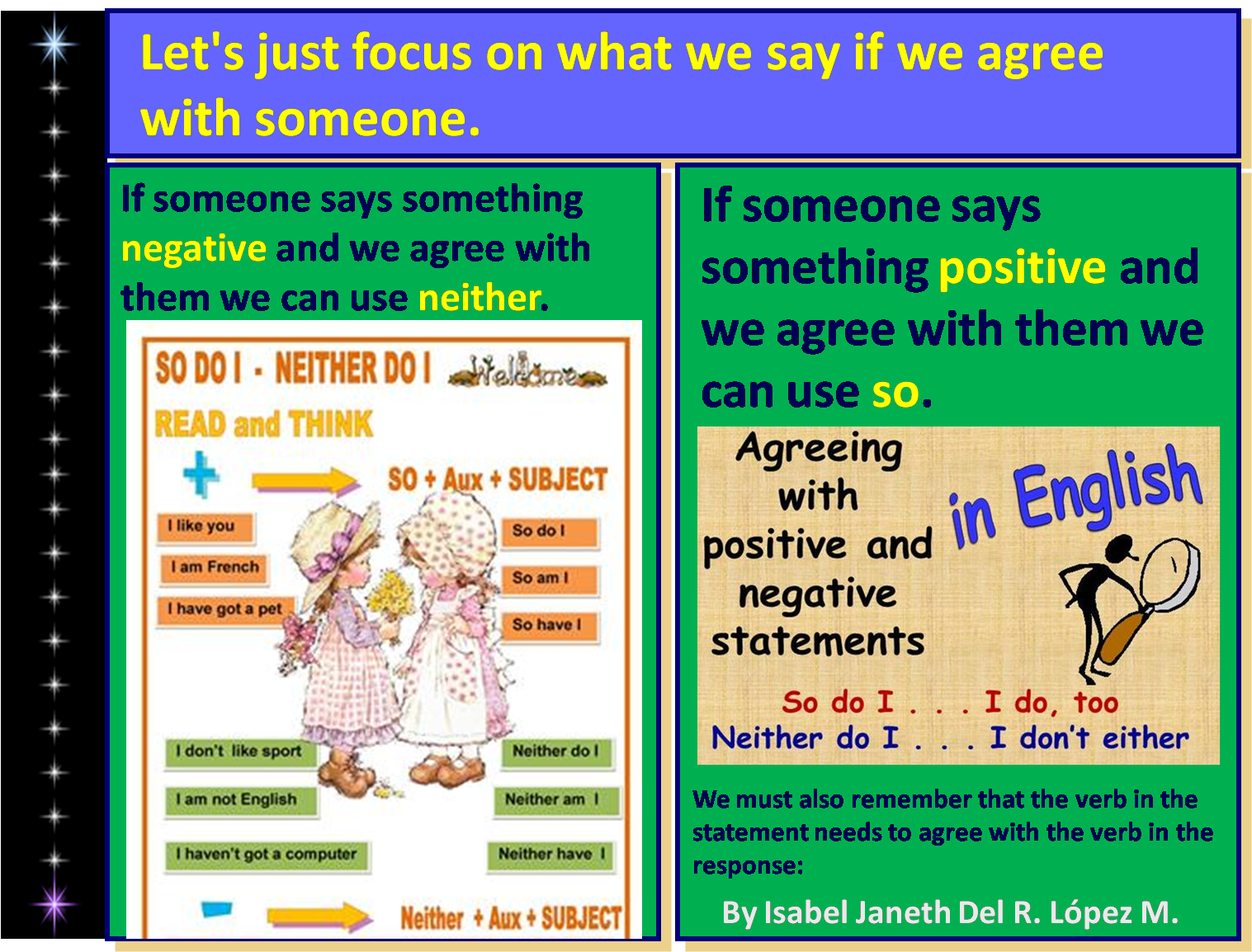
So and neither so am I, neither do I, etc. TestEnglish
The particle so is used when the statement of reference is an affirmative sentence, while neither is used when it is a negative sentence. - Sara: I have got a new jacket. - Mary: So have I. - John: I don't eat meat. - Emma: Neither do I. Anuncios 3. Structure of so (am) I and neither (am) I

SO and NEITHER Teaching Resources
So and Neither with Perfect Expressions. If we use a perfect expression (HAVE + Verb - en as in have eaten, had stolen, will have bought) in the first sentence, we follow so or neither by the appropriate form of HAVE or MODAL + HAVE. Bill has eaten too much. So has Mary. Bill had eaten too much. So had Mary.

SO NEITHER English grammar exercises YouTube
Neither Neither is used to agree with a negative statement: Mark: 'I don't like classical music.' Fred: 'Neither do I.' As with 'so' the auxiliary in the reply with 'neither' agrees with the statement: A: I don't speak Russian. → B: Neither do I. A: Peter isn't happy. →B: Neither am I. A: I can't play any musical instruments. →B: Neither can I.

So and neither general gramma… English ESL powerpoints
So / neither / nor in short answers 'I'm looking forward to the picnic.' 'So am I.' The statement is grammatically positive, so we replay with So. 'I haven't seen Paul today.' 'Neither have I. The statement is grammatically negative, so we replay with Neither or Nor. Statements comparing people Tim wants to go and so does Janet.

03 So do I / Neither do I Figure Out English podcast
So / Neither / Too - How to agree in English Shayna Oliveira Grammar "I love strawberry ice cream." - "Me too!" Free Download: 500+ English Phrases Me Too / Me Neither The easiest way to agree in English is to say "Me too" (to agree with a positive statement) or "Me neither" (to agree with a negative statement): "I love strawberry ice cream."

So / Neither English learning spoken, Third grade reading worksheets
How to use SO & NEITHER in English: "So do I", "Neither am I"… I will teach you how to use so and neitherSo do I" to agree with them. If your friend says, "I can't whistle", you can answer, "Neither can he" to refer to someone else. As you can see, so and neither can be used with different verbs and different subjects.

So Neither Either differences English Grammar Rules
Neither is used to show agreement with negative statements. Neither + Auxiliary + Subject (pronoun) The Auxiliary needs to agree with the verb tense in the original statement. It is similar to using either at the end of a sentence, although Neither is more commonly used, especially in spoken English. A: I don't understand Spanish.

Click on AGREEING SO, TOO / EITHER, NEITHER
1. Using 'So' Grammar: So + auxiliary/modal verb + pronoun Note: We should pay attention to the verb tense used in the statement while choosing our auxiliary form. 2. Using 'Too' Grammar: Pronoun + auxiliary/modal verb + Too In Negative Statements 1. Using 'Neither / Nor' Grammar: Neither (nor) + auxiliary/modal verb + pronoun Note:

So neither discussion starters, spea… English ESL worksheets pdf & doc
Well, James is here to explain when to use 'so' and when to use 'neither' to show agreement.Watch the. How can you show you agree with what someone has said? Well, James is here to explain.

LESSON 48 CÓMO USAR TOO EITHER SO NEITHER EXPLICACIÓN DE TOO EITHER
5 Neither is the opposite of so. Other alternatives: I won't/will not (accept bribes) either. Me neither. (informal) 6 But is more emphatic than and. 7 Informally, we can use a plural verb after neither and either + of + a pronoun (or a determiner + a plural noun): Neither of them go (es) to church regularly.

SO / NEITHER English ESL worksheets pdf & doc
So, too, either, neither: this is often used as a reply to someone else in a conversation, but both sentences can also be said by the same person, and even joined together. "So" and "too" are used in positive sentences to show agreement. Auxiliary (do/ does/ have/ should/…) I love football. I love football, too.

So / Neither ESL worksheet by turac
1 - I don't like mushrooms. Neither don't I So do I Neither do I 2 - I love going to the cinema. So am I I can So do I 3 - I can't swim. Neither can I I can Neither do I 4 - I haven't got a dog Neither have I So have I I have

English Intermediate II U6Responses with so and Neither
Peter didn't finish the homework on time. Neither did I. Insert an auxiliary verb between so or neither and the subject, to complete the statement. So do I. Neither have I. So will I. Neither am I. Make sure to conjugate the tense correctly based on the tense of the statement with which you are agreeing.

So, Too, Neither, Either. Learn english, English words, English phrases
: English Grammar SO - NEITHER How to use 'so' and 'neither' in English. SO SO is used to show agreement with affirmative statements concerning the speaker or another person. SO + Auxiliary + Subject (pronoun) : So do I Remember : The Auxiliary in the response must agree with the verb tense in the original statement. Here are some examples :

English Intermediate I So and Neither
For example, if I say, "We visited a beautiful beach," the subject is we followed by the verb, visit. But when we use so and neither to show agreement, the structure changes. The subject comes.

SO AND NEITHER English ESL worksheets pdf & doc
The verb after 'so' or 'neither' changes depending on the tense of the verb in the first sentence. (This is very similar to tag questions ). What about 'too' and 'either'? We can also use 'I do too' and 'I don't either', which mean the same as 'so do I' and 'neither do I': John: I hate mushrooms. Me: I do too (=I also hate mushrooms).